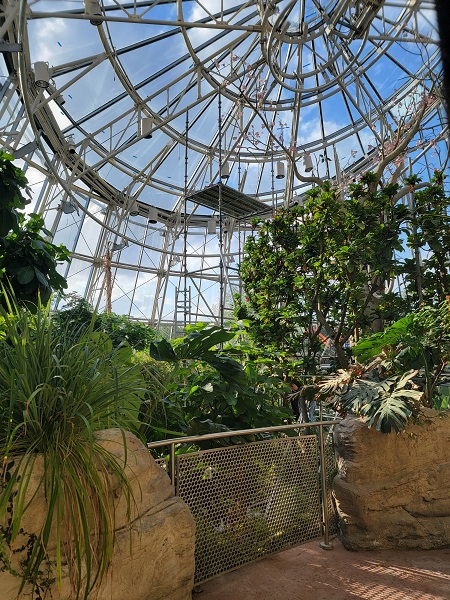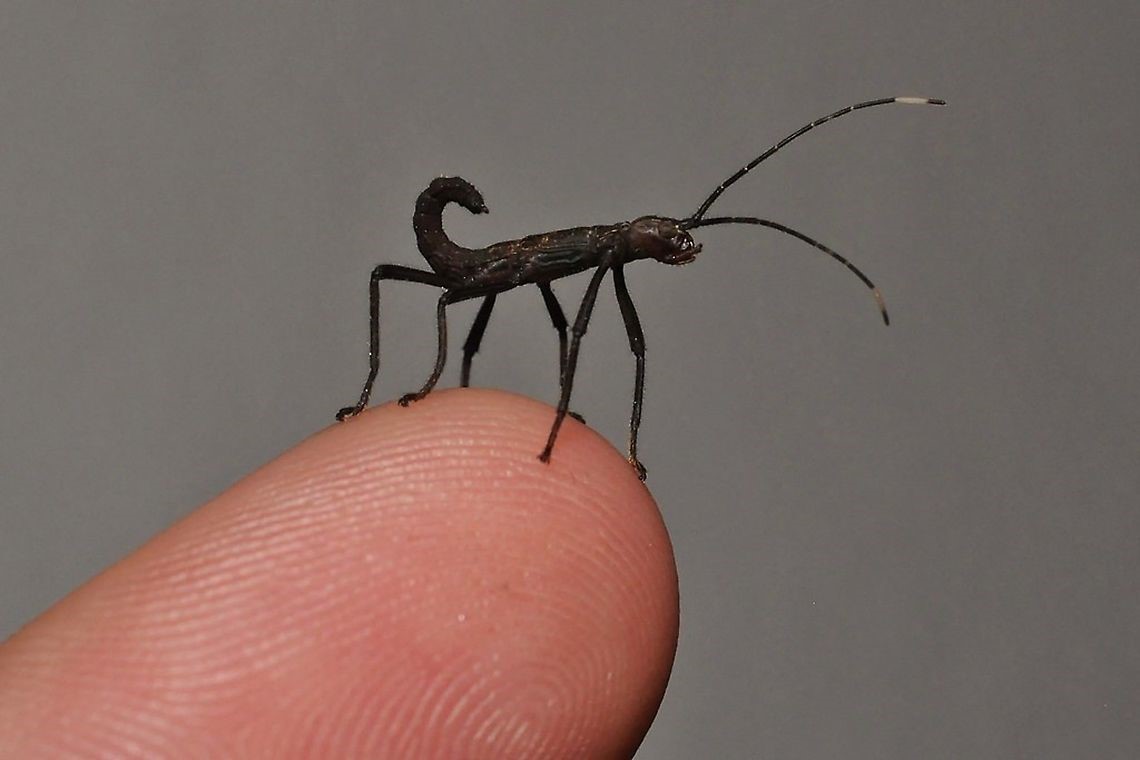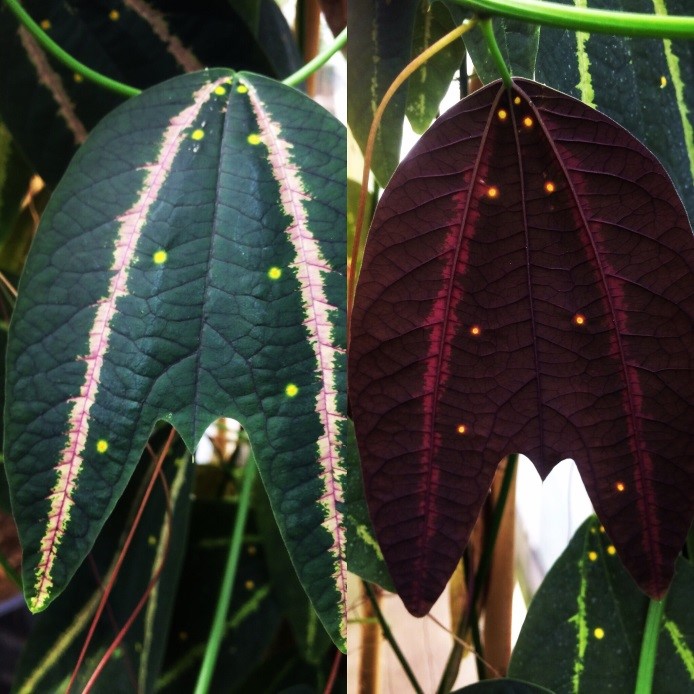The tropical vegetation in the Cockrell Butterfly Center features a number of plants with edible fruits. Some, such as coffee, chocolate, pineapple and papaya, are familiar and readily available in local stores.
But most visitors — unless they hail from equatorial climes — are probably unfamiliar with caimito, jaboticaba, calabash, Barbados cherry or miracle fruit.
One of our favorites is the jaboticaba, a small tree that bears grape-sized fruits in clusters growing directly out of the smooth-barked trunk — very bizarre looking! The tasty pulp inside the rather thick, purplish-black skins is translucent white and juicy, surrounding one to three seeds. Very popular in its native Brazil, jaboticaba fruit is eaten fresh or used in jellies and drinks.
 We get many questions about the calabash tree, which hails from the dry forests of Central America. Strictly speaking, its grapefruit-sized (or larger), green fruits are not edible, although cows and horses may sometimes break open the thick shell to eat the pulp and seeds inside. In El Salvador, the seeds are ground to make the traditional beverage horchata. More often, people dry and hollow out the shell, sometimes carving the surface, and use it as a cup or dipper.
We get many questions about the calabash tree, which hails from the dry forests of Central America. Strictly speaking, its grapefruit-sized (or larger), green fruits are not edible, although cows and horses may sometimes break open the thick shell to eat the pulp and seeds inside. In El Salvador, the seeds are ground to make the traditional beverage horchata. More often, people dry and hollow out the shell, sometimes carving the surface, and use it as a cup or dipper.
One of our most prolific fruit bearers is the caimito (also called custard apple or star apple) from the West Indies. This tree’s dark green leaves are a shimmering copper on their undersides—the scientific name Chrysophyllum, which means “golden leaf,” is very appropriate! The fruits are the size of large plums and the color of eggplants; inside they have a dense, lavender flesh that is somewhat sweet. The milky sap is quite sticky, so it’s best to eat these with a spoon. (However, we feed most of them to our butterflies, since none of us like the taste much.)
The Barbados cherry has red, cherry-sized fruits that are a little tarter than cherries. Some people grow a miniature form of this tree here in Houston, but the much smaller fruits of this plant are relished only by birds.
 Finally, “miracle fruit,” the color and size of a cranberry, is borne on a shrub from West Africa. One doesn’t eat the fruit for itself, as it is quite insipid, but rather for the amazing transformation of one’s taste perception that results from eating it. Chewing on this berry makes even the sourest lemon taste sweet; it was apparently used in its place of origin to make sour fruits and bitter roots more palatable.
Finally, “miracle fruit,” the color and size of a cranberry, is borne on a shrub from West Africa. One doesn’t eat the fruit for itself, as it is quite insipid, but rather for the amazing transformation of one’s taste perception that results from eating it. Chewing on this berry makes even the sourest lemon taste sweet; it was apparently used in its place of origin to make sour fruits and bitter roots more palatable.
You can experience this interesting sensation yourself if you come to our special “taste-tripping” event on Aug. 28.
WHAT: Adult Hands-On Class — “Taste Bud Tripping with Miracle Fruit”
WHEN: Wednesday, August 28, 6 p.m.
HOW MUCH: Tickets $50, Members $40
The miracle fruit berry from west Africa tricks your taste buds and makes food taste sweeter. Even the most sour and tart foods, such as lemons, are transformed into sweet morsels. Experience the magic of miracle fruit along the dramatically lit trails of the Cockrell Butterfly Center rainforest. After you eat the exotic berry, sample food and drink selected for the delicious impact the miracle fruit has on its taste. Book your taste buds on a trip of a lifetime at HMNS and see why—out of all of the delicious fruits of the Cockrell Butterfly Center flora—the miracle berry fruit is arguably the sweetest.
For tickets call (713) 639-4629 or click here to purchase them online in advance.







